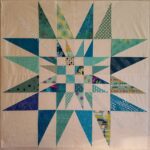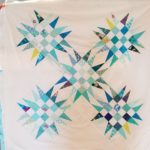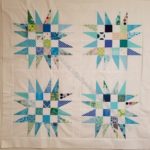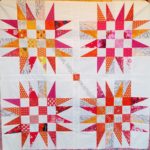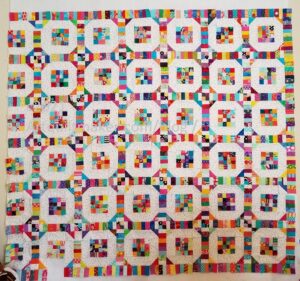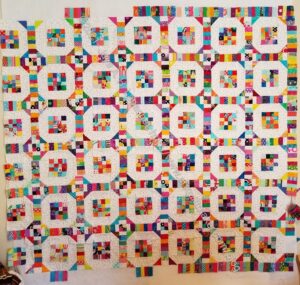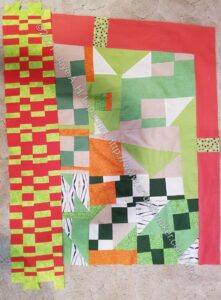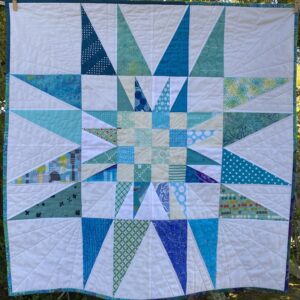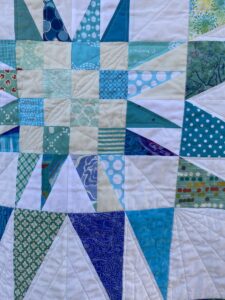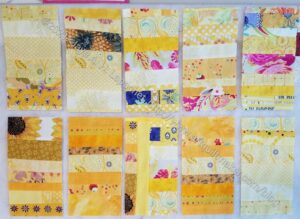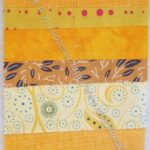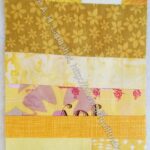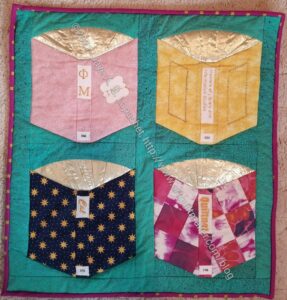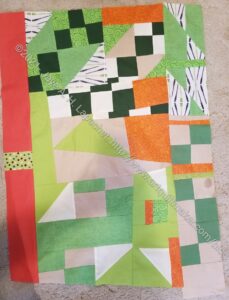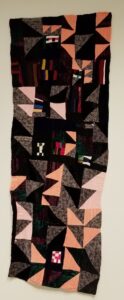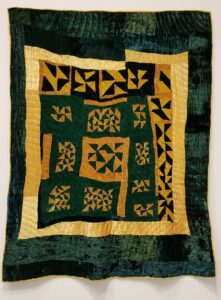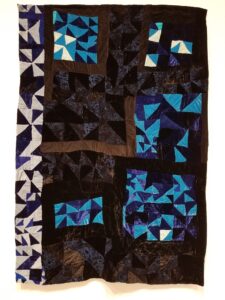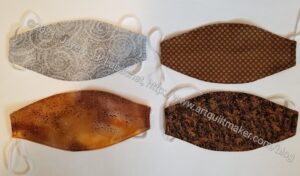After 18 months, I am on the road again. I drove almost 1000 miles north to see my YM who has had two bouts of non-COVID illness in the last month. I needed to see him for myself – see that he was getting well, see that he was taking care of himself. Since he was the only one who was not fully vaccinated (though he is now), I felt confident in traveling.
I want everything to be like it was, though I realize it isn’t so I put on my mask and go forth in the new normal: looking at others wearing masks and seeing so many closed shops and restaurants.
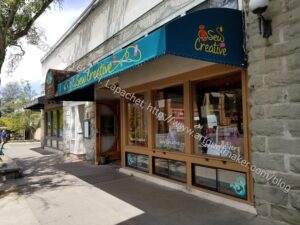
On the way north, we stopped in Ashland, Oregon. It is a beautiful city and I took some time to venture to a quilt shop.
Sew Creative was crammed full of everything quilty: fabric, kits, patterns, notions, etc. I thought the shop was a tiny bit overcrowded and a little dark, but I liked the overcrowding because there was so much stuff! Also, it was a little dark because the walls had beautiful wood. Neither made me not want to go there again. I had to decide if I was going to visit again on the way back!

One of the things I saw (but didn’t buy) were a couple of interesting bag patterns. The shape of the bags were pretty normal, but they had some interesting detail. One had a diagonal pocket (like the shape I cut with the Simple Folded Corners ruler). It is in the middle of the counter in the photo. The other, which is hanging in the photo, right, has a scalloped top edge.
This section had some Figo Linen/Cotton blend fabrics that were a little like canvas. I bought two 2 yard pieces and plan to make some bags out of them. I have heard of Figo fabrics and seen them in quilt shop newsletters, but hadn’t seen them in person. Since this was the first quilt shop in which I had set foot in 18 months or so this should come as no surprise.
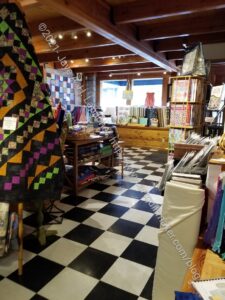
I also saw a large selection of books (photo left). They had about 3 full racks of books. I didn’t look closely at them, but I noticed several I have not seen at other quilt shops or had never seen. The shop had a GREAT selection of embroidery stitch books.
In the books photo you can also see a sample quilt. The shop had a number of sample quilts around the store. I am not sure if the samples were for classes. There was a straight list of classes, but there were no photos, so I’m not sure what types of classes they were and I didn’t ask.
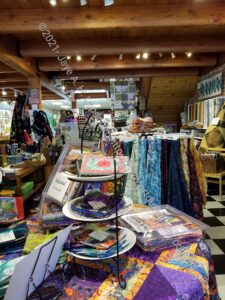
This photo is looking from the back of the store towards the front window. You can see the beautiful wood on the ceiling.
There were several tables scattered throughout the store with various displays. Many of them held a project or kit. I didn’t look very carefully at the kits, but I did notice there was a huge selection, so anyone who didn’t want to make decisions was in the right shop.
I bought a couple of gifts and the shop staff was very helpful with them.
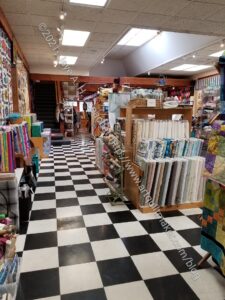
The back of the store was a little brighter. The ceiling was white and that helped. Don’t you love the black and white floor? I do!
There really was a lot of stuff in this store and looking at the photos, I realize how much I missed. Most of the bolts of fabric by color were housed in the back of the store. I found some turquoise dot dash fabric. They had quite a bit of Philip Jacobs for KFC prints and I spent a long time looking at them and dreaming. I also found a few red-violet prints to replace the ones I have used up.
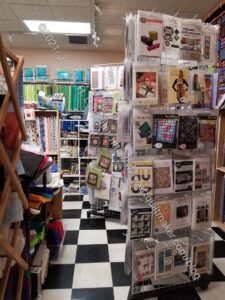
In this photo, you can see how many patterns are available. There were a wide variety of non-quilt patterns. I saw placements, a number of different bags, some garments. I also noticed that many of the patterns were from designers I didn’t recognize. I didn’t find it difficult to see the patterns, in terms of lighting. That is one of the things I enjoy about visiting quilt shops in different areas.
In the photo, left, you can also see the shelves of fabric at the back of the photo. That is where I found the dot dash fabric.
The other thing I noticed was the shop was very clean. I don’t know what they have been doing during COVID restrictions, but it looked like they turn over their stock quickly.
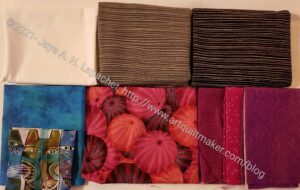
The grey stripes and the black stripes are the Figo fabrics. I am going to use the white, which I think is Grunge fabric, to redo my inspiration board. The Laurel Burch fabric will be a gift. The shop had a great selection of Kaffe fabrics. I bought that shell (?) sea urchin (?) print. I also replaced some of my red-violets.
I highly recommend this store. I will definitely stop again next time I drive through Ashland.
Sew Creative
Address: 115 E Main St, Ashland, OR 97520, United States
Phone: +1 541 482 1665


